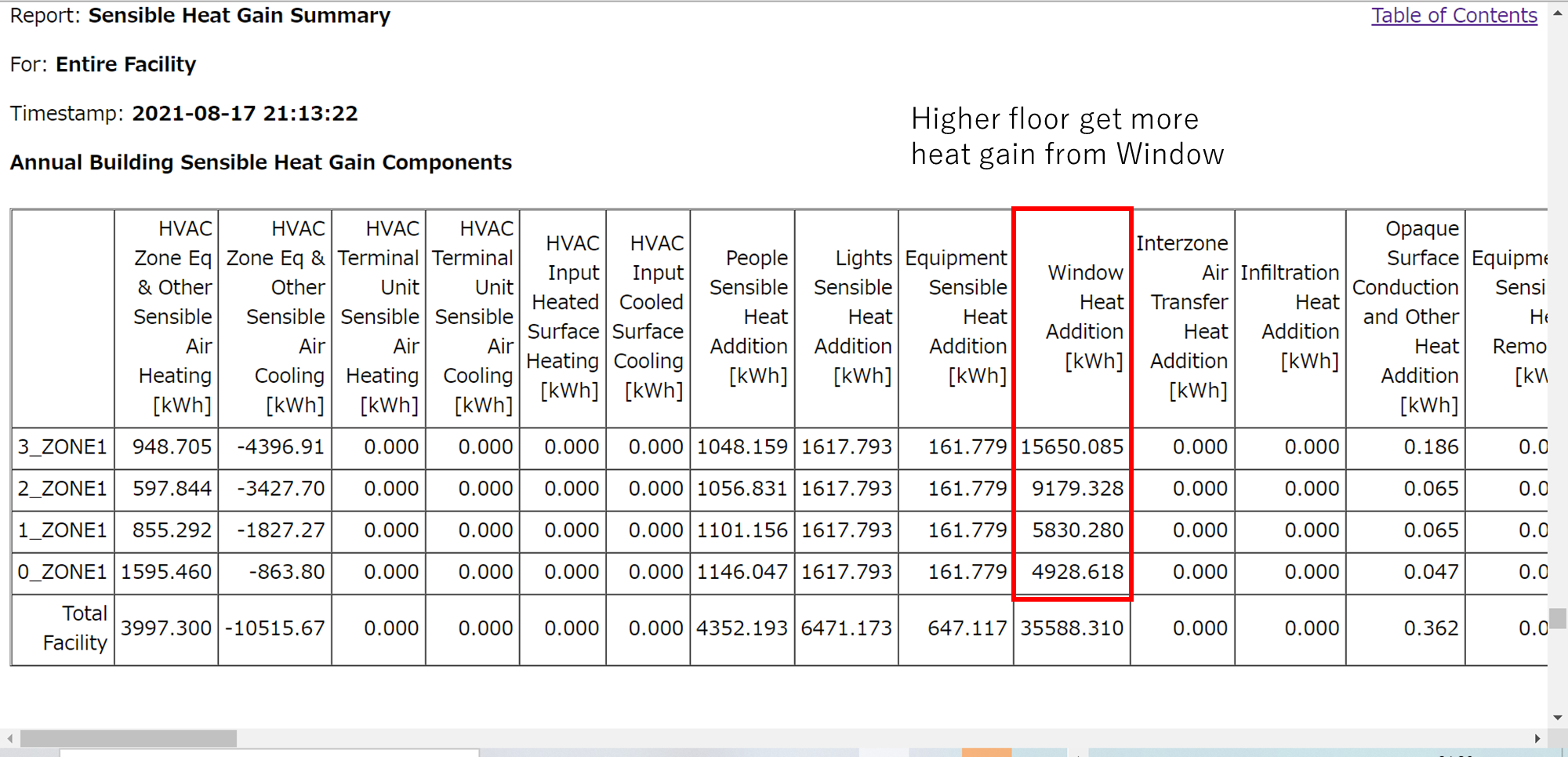Yeah, there's two I can think of. The outdoor air temperature used for surface conduction and convection calculations is modified to account for the air temperature gradient with respect to height (-0.0065 K/m)[1]. Similarily the local wind speed is modified to account for increase in wind speed with height[2].
Both of these then impact surface convection[3], either directly (outdoor air temperature) or indirectly (wind speed used in derivation of heat transfer coefficient). So your interior and exterior surface temperatures will vary, and impact your surface conduction/convection rates, and the long-wave radiation absorbed by the interior surfaces and masses. Both your opaque and window surfaces are impacted, but of course the higher U-value of the window means it'll have a much higher magnitude of heat transfer then opaque surfaces, and thus illustrate a higher energy variance along its height.
EDIT
One thing I can't figure out is why exactly it results in heat gain at higher levels. What climate are you in? My guess is if you're in a cooling-dominated climate, then the higher convective heat transfer alone could drive the heat gain. I'm not certain, and would be curious if anyone else has better insight.
- Local Outdoor Air Temperature Calculation. https://bigladdersoftware.com/epx/doc...
- Local Wind Speed Calculation. https://bigladdersoftware.com/epx/doc...
- Outdoor/Exterior Convection. https://bigladdersoftware.com/epx/doc...








